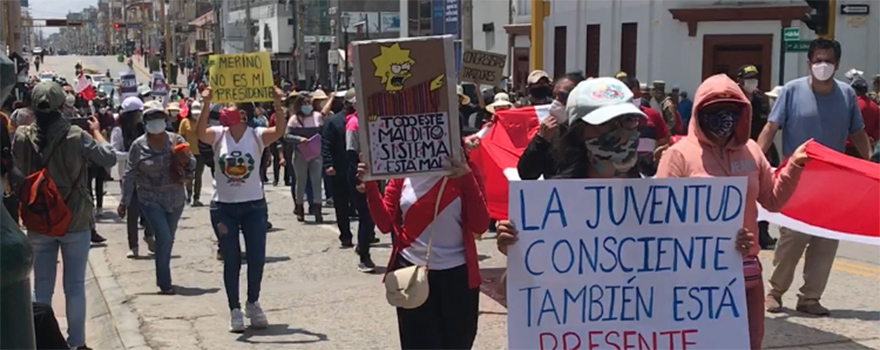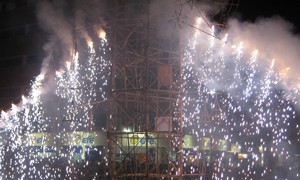Third time’s a charm, they say. And we may have actually found a winner with the third Peruvian president within a week – Francisco Sagasti Hochhauser.



Tag: culture
“Our original guiding stars are struggle and hope. But there is no such thing as a lone struggle, no such thing as a lone hope. In every human being are combined the most distant epochs, passivity, mistakes, sufferings, the pressing urgencies of our own time, the pace of history.” – Pablo Neruda in his Nobel Lecture
In Peru, big community fiestas celebrating patron saints usually involve castillones, tall pyrotechnic towers. Fireworks and sparks shoot out from these castillos (castles) in a series of spectacular shows as Peruvians often celebrate right underneath the extravaganza. I still have a tiny scar from a projectile firework that landed on my upper back as I danced under the castillon during my very first few days in Peru, celebrating the patron saint, Santiago, for Peru’s Fiestas Patrias (Independence Day).
The toro loco (crazy bull) is a variation of the pyrotechnic tradition. A person holds up or carries a bull-shaped structure on his head and runs around through the crowd as sparks and sometimes more propeller fireworks fly out from the “bull.”
There’s a reason the use of fireworks by the public is banned in various places around the world, including Davao City (where I was born in the Philippines), Ireland, Chile and Malaysia.
Get a feel for the grandness of these types of celebrations with castillones and toros locos in the following video.
What kinds of positive or negative memories do you have with fireworks? Are celebration and tradition worth the danger of fireworks?
“Ahora sé que el tiempo es la única manera que tenemos para comprar nuestros sueños.” — Lucho Quequezana (link in Spanish) [I now know that time is the only means we have to buy our dreams.]
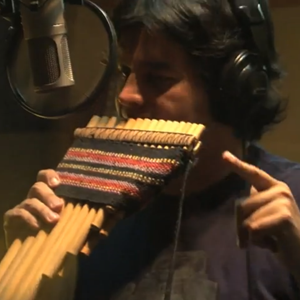
Lucho’s parents forced him to bury his dream of becoming a musician, so he filled his life with his studies instead. In Lima, he studied Communications and ended up teaching at one of the best universities in the country, the Pontifical Catholic University of Peru. It was a comfortable life, but his love for creating traditional Peruvian music continued simmering in his heart, seeking a revival.
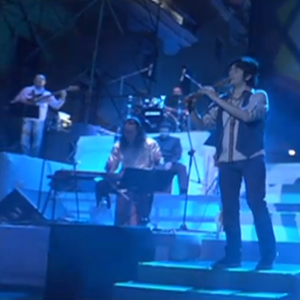
Lucho continues to tour with Sonidos Vivos and teach Peruvian music internationally. He has shared extracts of his compositions with Cirque du Soleil and has also produced a documentary of his group’s story and journey. Meet the multicultural members of the band and get a taste of Peruvian fusion music in this short promo clip of Sonidos Vivos’ world tour last year:
When and how have you valued time over money? How has music played a role in your life?
No one knew that he was dead. He sat upright against the wall for support, his head hanging forward in a resting position. He had been robbed of everything after exiting a nightclub in Huancayo and they left him there, probably imagining that he’d wake up from his drunken stupor. He didn’t. Instead, he died of hypothermia from a cold Andes night.
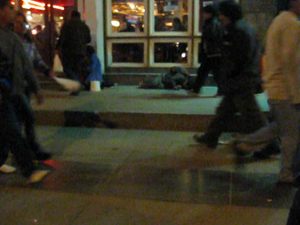
The “bystander effect” states that we are less likely to help someone in trouble if we’re part of a larger crowd. “I’m sure that the other guy will help,” we tend to think. Then, no one does. There are victims.
What have you become desensitized to? Please inspire us by sharing about someone you recently helped who may have been ignored by society.
According to Catholic tradition, the devotion of the “Via Crucis” or “The Way of the Cross” honors the last few hours of Jesus’ death. It consists of a spiritual pilgrimage, acknowledging 14 stations or shrines that depict distinct events beginning from Jesus’ death sentence to his crucifixion and burial. The phrase “via crucis” or “way of the cross” is also used to symbolize all the obstacles we need to overcome when we try to achieve a certain goal.
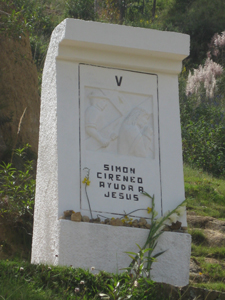
Other than the typical route where you pray and leave a rock at each shrine along the way, there are two other ways up the hill. You can ride a taxi up the winding path, speeding by each of the shrines, or hike directly up the hill, bypassing all of the stations. The latter is the fastest route up, but it’s also the more torturous path because of the steep incline of the hike. As an afterthought, it could be an experiential way to signify Jesus’ suffering during the Passion.
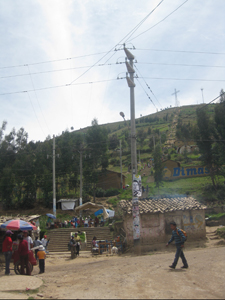
In undertaking this mini pilgrimage today, I realized that living in Peru has become somewhat of a pilgrimage for me in the sense that I was drawn to a place that was meaningful to me and the journey has been transformational, endowing me with insights and understanding. Although I haven’t taken the typical route and I sometimes feel like I’ve chosen the tougher passage, I have also discovered more and more people along this path who have motivated me and helped remind me of the value of my choices. In the blogging world, I would especially like to thank Janet Callaway, Sherry Zander, Rowena Bolo, Karen Swaffield and Diana Simon.
They say that when you return home from a pilgrimage, nothing is ever the same again.
What has your personal pilgrimage been like?
What comes to mind when you think of Peru?
I now know that people more globally conscious than I am often associate Peru with Machu Picchu, one of the most recognized tourist sites in South America. I’m ashamed to admit that on my first trip over to Peru in 2008, the extent of my imagination was imageless Spanish-like sounds. Needless to say, I didn’t know anything else about Peru and was thoroughly surprised to learn about the wide variety of cultures, traditions, histories, peoples, faces, languages and climates that make up the country.
To express my current perspective of Peru’s overwhelming grandiosity, here is a brief multifaceted look at my adopted country:
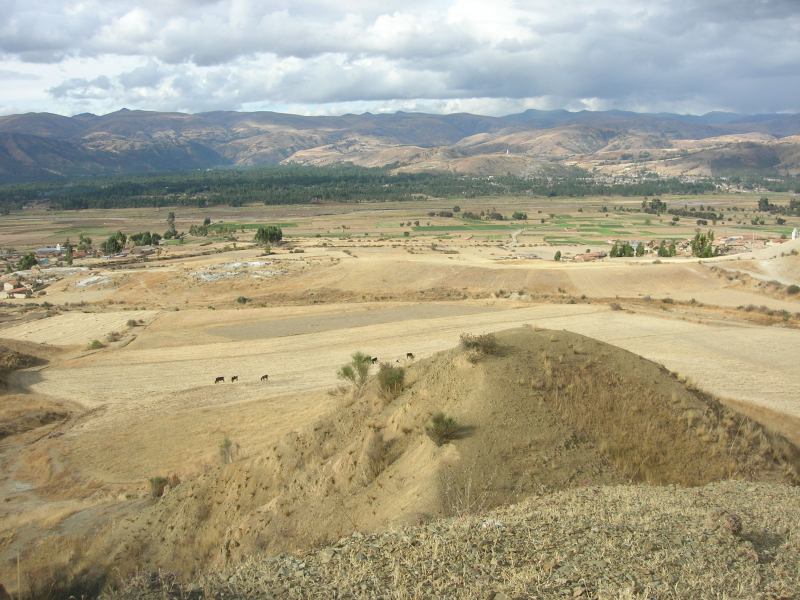
- Peru has three geographically-diverse regions. If I were adventurous enough, I could leave the sunny beachside to go mountain climbing in the Andes and finish the day off visiting the mosquito-filled hut of an Amazonian shaman. The diverse climates beget high biodiversity and there are over 5,000 plants and animals unique to the country.
- Spanish is the official language, but many Native Americans speak various dialects of Quechua, Aymara and around ten other native tongues.
- Blond-haired Peruvians inhabit Oxapampa, a little town in the central rainforest. They descend from Austrian-Germans who were invited to colonize the area over 100 years ago.
- Afro-Peruvian music originated from Chincha in Northern Peru, where there is a large population of Peruvians with African roots.
- The first Asians to land in South America were the Chinese and Japanese who arrived in Peru’s port of Callao in the 1800s and established one of the West’s earliest Chinatowns in Lima. Nowadays, comida chifa (Peruvian-style Chinese food) is a mainstay in Peruvian cuisine.
- Two traditional Andean dances of Peru made the UNECSO Lists of Intangible Cultural Heritage in 2010: la huaconada — a masked dance of Junín where the dancers symbolically whip all naughty people during the first few days of the year — and la danza de las tijeras — an elaborate dance from the Southern Andes where dancers create a rhythm with pieces of metal used like oversized scissors.
- Not only are there Incan influences, but Pre-Incan cultures also continue to have a strong presence in today’s Peru, from Chimor’s Chan Chan to the Nazca lines. North of Lima is Caral, the oldest city in the Americas of the oldest known civilization in the Americas, the Norte Chico.
If the mere tip of the Peruvian iceberg can rouse such awe, what more when I consider the entire world and all of its history? The largeness of the world makes me feel small yet connected to humanity, humbled by its infinite knowledge, grounded to generations of wisdom and motivated to continue absorbing the little things.
What does the largeness of the world make you feel?
If you can excuse the Peruvian beer ad, the underlying message of the following video is one of unity. At the beginning, they sing: “From droplet to droplet, the sea is formed. Grain to grain, the sand, the beach. Leaf to leaf, the forest and the entire jungle.” Each person is just one droplet, one grain of sand or one leaf from the standpoint of the universe, but I believe that we are each an important contribution to humankind.
Huancayo is surrounded by farmland, so I’ve encountered a myriad of animals ranging from livestock for livelihood to city pets in silly clothes. Some animals have a purpose: cows for fresh milk, donkeys for reliable transport and alpaca for soft wool. There are also animals raised solely for food: chickens and pigs. Other animals are clearly pets: dogs, cats, hamsters and iguanas. I’m still getting used to the fact that guinea pigs are always raised for food, often cooked as a special dish, and never kept as companions.
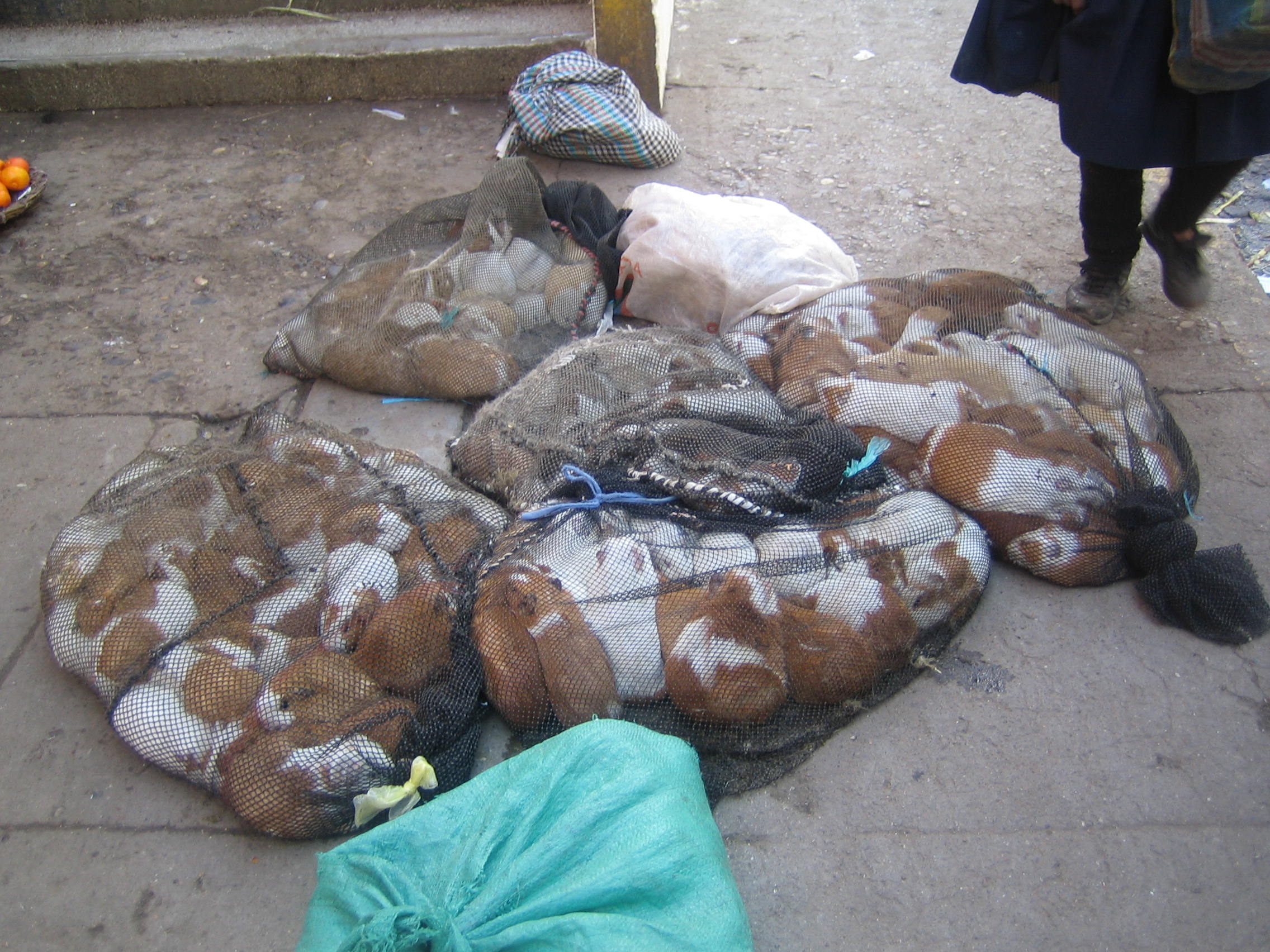
Since neutering is expensive and uncommon, Huancainos are more likely to receive a puppy from a friend or pick up a stray kitty. Some homeowners have come-as-they-go pets who show up during the day to have a snack, hang out for a while and then leave every evening. Stray dogs are rampant here. They often walk right beside you and sleep in the middle of the sidewalk as if they own the city. You’re part of their daily drama when it comes to scavenging, playing, fighting and copulation. In the more rural areas, stray dogs can be vicious, so you always carry a rock around and hopefully, never have to actually throw it.
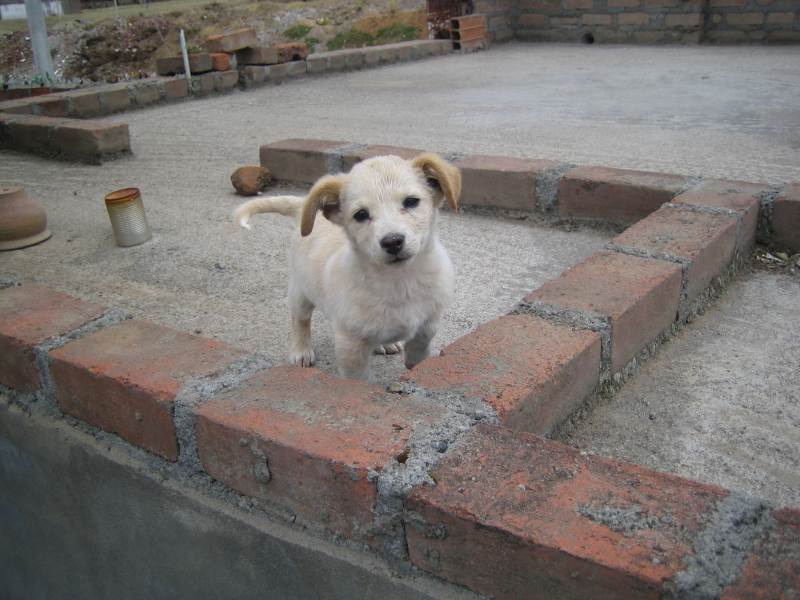
To communicate with Peruvian animals and animal owners alike, the foreigner must learn new vocabulary of onomatopoeic words. Cats are almost always called “Michi,” often in place of an actual pet name. This name apparently derives from the sound they make: “miau” (“meow”). Dogs are usually pinned “Fido” (“fee-doh”) and they say “guau” (“wow”). I still don’t understand how chicks “pio pio,” although it probably makes more sense that I wake up to the rooster on the fourth floor greeting me with “ki ki ri ki” rather than “cock-a-doodle-doo.” The only other animals that seem to express themselves similarly to their North American counterparts are pigs (“oink”), ducks (“cuac”) and cows (“muu”).
We welcomed a kitty to the family last Thursday and were surprised to learn that he speaks both cat and dog languages, miau-ing and guau-ing in his conversations with us. After a day of fear and loathing for getting him vaccinated, Fénix (Spanish for “Phoenix”) is now purring like a motor, playing with all reachable shoelaces and falling into unescapable buckets:
When it comes to corporal punishment in the Central Andes of Peru, domestic abuse is still typical and it wasn’t too long ago that there were more extreme measures at schools. Parents wrap broken egg shells on the child’s hand with wool dipped in brandy, and then light it on fire. The alcohol produces a quick flame and the egg shells burn against the skin. Some claim that its purpose is to scare a child from robbing and that the flame is blown out or disappears as soon as it appears. Others show their scars from the burns.
Using a belt is also a typical way of punishing children. If one child is the culprit, all children are thrashed in the name of the Father, the Son and the Holy Spirit. It’s believed that all children deserve the same punishment and should learn the same lessons. Beating children is somewhat of a ritual on the Thursday and Friday of Easter. It symbolizes a holy sacrifice as they share the pain and suffering of Jesus on the cross.
At schools, children who arrived late were forced to kneel on beer bottle caps in front of the whole class. It left scars on their knees. Children who had a difficult time understanding a concept in class had their heads banged against the wall. Children who misbehaved were hit by a pointer stick, sometimes until the stick broke in half. These days, children are no longer abused in the classroom, but they are still punished if they arrive late — they get hosed with water and spend the rest of the day dripping wet.
This is apparently not so bad because it’s reminiscent of the entire month of February when the whole country “celebrates” Carnaval. In Huancayo, this celebration entails gangs of boys throwing water balloons or buckets of water at random girls. You have to watch out because people can even attack from their apartments or dunk you in the plaza fountains. I have already seen three ladies get soaked and I’m not prepared to be the next one!
Writing about combis last week got me thinking about how hilarious it is when the cobradores (money collectors) run to get their card stamped. Each combi has a card that needs to be stamped at various locations during the route. As I understand the set-up, there’s a penalty if a combi is consistently late — typically, it has to run the full route one more time. To avoid this, cobradores often jump off their moving combis up to three blocks before the checkpoint and run at full speed to get their cards stamped by a machine or signed by a waiting time-controller sitting at the corner of the block with a pen and clipboard. I’ve always wondered if it’s actually ever worth it for the cobradores to endanger their lives by running through traffic, only to shave off a few seconds. Sometimes it seems more like an excuse to move their legs after standing in the same cramped combi doorway for hours at a time.
Peruvian society often functions on the basis of punishments and rewards (or avoidance of punishment). The classic dictatorial boss can subtract from your pay or give you bonuses as s/he pleases. Corporal punishment is the norm (and so is domestic abuse for that matter) and children are hosed when they arrive late to school. In a government program for maternal and child health, families are given 100 soles for showing up to workshops. Even NGOs silently tell mothers, “If you don’t treat your children well and follow our recommendations, you won’t get gifts at the end of the year.” So then you hear mothers say, “I’m going to join this project because they’re going to give me a gift at the end,” when what you want to hear is, “I’m going to join this project because it will better the life of my child.” When I tried to raise my concerns about these extrinsic motivators, I was brushed off as the gringa who didn’t understand Peruvian society. “It’s the Peruvian way,” I was told. I accepted it.
Four months later, evidence starts falling into my lap that Peruvians themselves are trying to make changes and that the system of punishments and rewards doesn’t have to be “the Peruvian way.” A professor I used to work for encouraged me to meet with one of her contacts in Lima, Dr. Mary Claux. As I read up on Dr. Claux’s research, one of the first academic articles that arose questioned the need for authoritarian Peruvian leaders (article in Spanish). A good Peruvian friend shared his thoughts on leadership with me and he cited his own businesses as examples that a freer managing style without penalties or crackdowns works. He even sent me an enlightening and relevant TED talk presented by Dan Pink (below) that contributed to his belief system regarding the best way to motivate others.
It “CAN BE DONE,” my friend writes to me.
With renewed faith in my morals, I figure it might be worth a shot sharing this new evidence with the nonbelievers I have come to know in Huancayo.
Copyright © 2024 Samantha Bangayan | Sitemap | Disclosure Policy | Comment & Privacy Policy
All articles and photos in this blog are licensed under the Creative Commons Attribution License CC BY-NC-ND 3.0.
